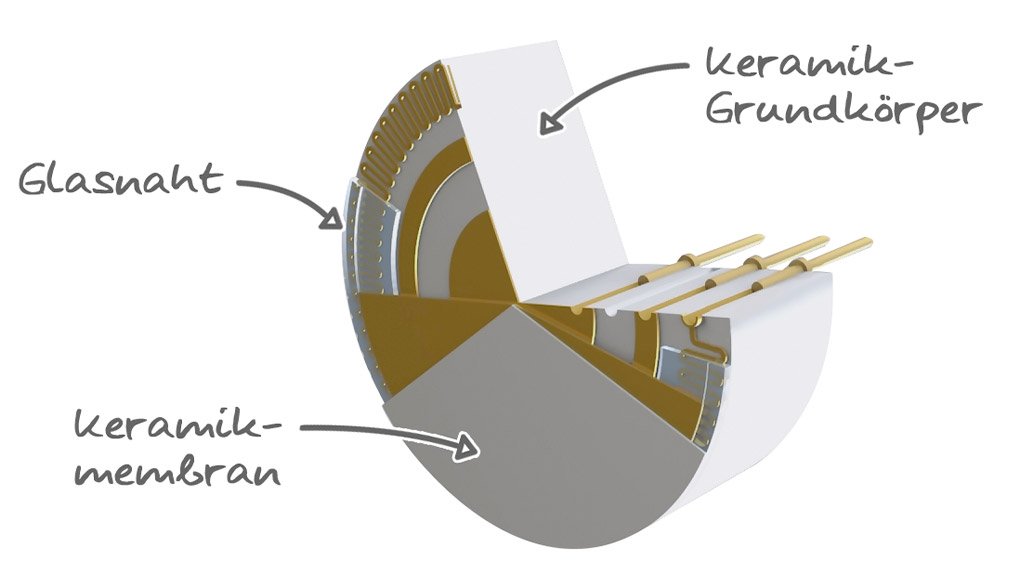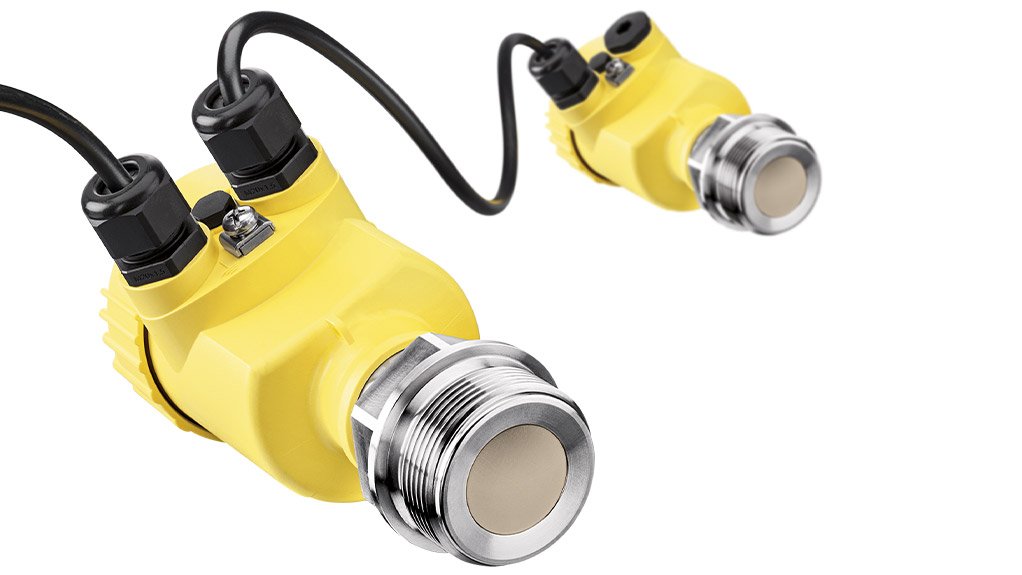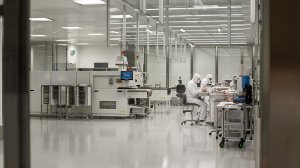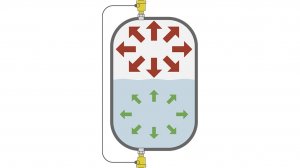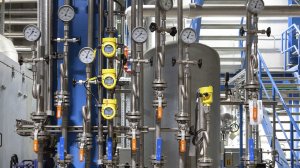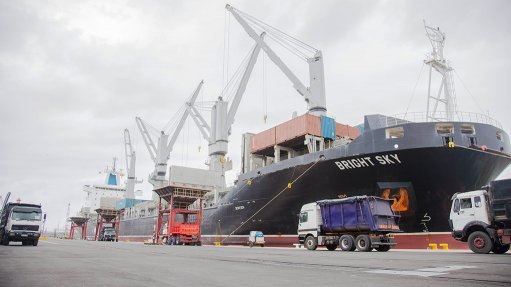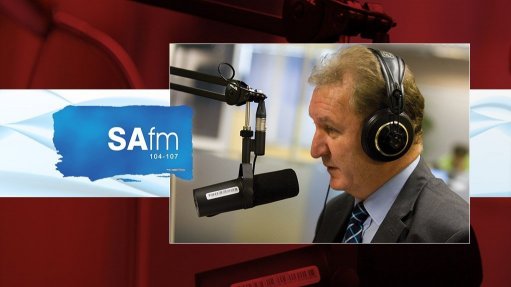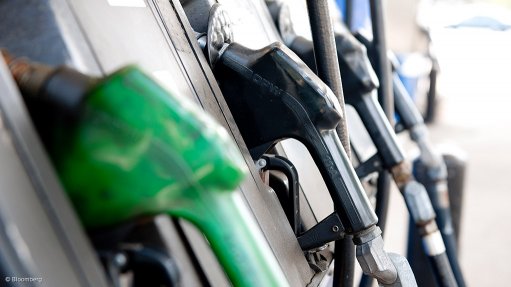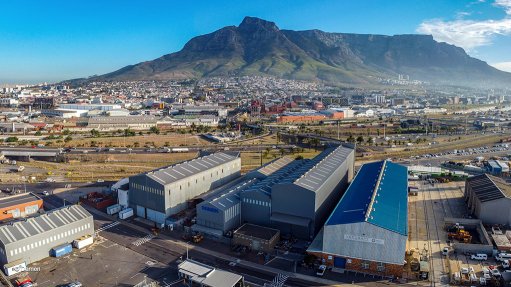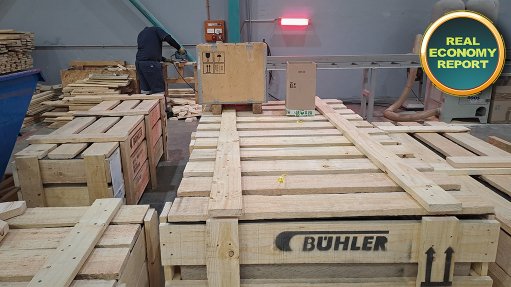VEGA Instruments
This article has been supplied as a media statement and is not written by Creamer Media. It may be available only for a limited time on this website.
( Virtual Showroom )For a long time, metallic diaphragm sensors have been the standard for pressure measurement in chemical plants. However, ceramic measuring cells have been a proven alternative for most applications for quite some time. They offer high safety, long-term stability and reliability, and they also avoid common problems associated with impulse lines and oil fillings. And they are already seen as the perfect solution for use in hydrogen applications.
If the process pressure in an important reactor in a chemical plant suddenly rises or falls abnormally, the system operator immediately feels his pulse quicken with concern: What does an event like this mean for the safety of the system and the plant? How does it affect the quality of the batch? What caused the abnormal occurrence? A look at the measured values – not only from the pressure sensors installed on the reactor but also from other sensor information –can provide clues: However, if the temperature, flow rate, level, etc. are within the usual specifications, the cause could be a sensor defect.
In the chemical industry, reactor pressure is not the only thing measured. Level, volume flow and the condition of filters are also measured, the values often being derived from pressure or differential pressure measurements. After temperature, pressure is the most frequently measured process variable in the chemical industry and an important parameter for both safety and product quality. However, the chemical industry also subjects these sensors to some tough challenges.
Metallic-based sensors have always been the backbone of industrial pressure measurement technology in chemical processes. The instruments are usually made of stainless steel or other specialist high-quality alloys designed for use in harsh industrial environments. Thanks to their robust design, they are suitable for applications where high-pressure and extreme temperatures prevail. Because the process and installation conditions in the chemical industry are diverse, many different designs and measuring techniques have been developed over the years. Besides the wide temperature and pressure range, the main advantage of metallic sensors is their ability to withstand extreme conditions. However, the disadvantages include their susceptibility to corrosion when the process diaphragm is constantly exposed to aggressive chemicals and the inevitable ageing of the metal, which expresses itself in measured value and zero drift, for example. Regular recalibration is a necessity to maintain the accuracy of the devices over the long term.
Corrosion-resistant and robust
Since the 1990s, ceramic-engineered pressure sensors have been an interesting alternative to sensors made of metal. These sensors are characterised by their exceptional corrosion resistance, a property that makes them ideal for chemical processes involving aggressive substances. In addition, ceramics ensure excellent long-term stability and minimal drift, which ensures a reliable measurement over a long period. “Ceramic sensors can be used for pressure measurement in an estimated 60 to 70 per cent of all chemical applications, delivering clear advantages, yet their properties are still not widely known,” explains Robin Müller, International Product Manager at VEGA. This is because the material is often seen as being 'too fragile'. “This is an unjustified concern,” says Robin Müller: “Ceramic measuring cells have a significantly higher overload resistance than metallic cells. Whereas metal diaphragms can deform irreversibly when exposed to very high pressure, a ceramic diaphragm simply deflects, sits against the base body and then returns perfectly back to its original position.”
Other features speak in favour of using ceramic sensors: While metallic measuring cells operate with oil as a transmission medium, which can leak into the process in the event of a diaphragm rupture, ceramic measuring cells are completely dry, i.e. they contain no filling oil. They function in a way like a capacitor: Measuring electrodes embedded in the diaphragm and in the base body, together with air as a dielectric, form an electric field. Pressure on a ceramic diaphragm causes a minute amount of deflection, which changes a capacitance value. The pressure can then be calculated from the factory-calibrated capacitance value. “In contrast to metal diaphragms, which are subject to material fatigue, ceramic diaphragms by nature always return to their zero point and therefore exhibit very high long-term stability. That’s why the sensors usually require little or no recalibration,” explains Müller: “And this is particularly advantageous for applications in a high vacuum.”
High-tech design withstands adverse process conditions
The ceramic measuring cell CERTEC® developed and manufactured by VEGA, forms the basis of the sensors known as “VEGABAR”. In an extremely precise manufacturing process, the diaphragm and the base body of ultra-high purity aluminium oxide ceramic are printed with gold circuits under clean-room conditions and joined together with glass solder in a high-temperature process to form the measuring cell.
About ten years ago, the metrology experts at VEGA figured out how to further eliminate a disadvantage that ceramic pressure sensors had early on, compared to metallic measuring cells: This involved improving the performance of ceramic sensors to temperature shocks and moisture. In addition to the measurement of the process temperature in the cell body, which compensates for the influence of temperature on the measured pressure value, a second temperature sensor on the rear of the ceramic diaphragm can more quickly detect even the smallest temperature changes. An algorithm built into the sensor electronics ultimately ensures that temperature shocks are compensated for. “The values from this relatively sensitive temperature measurement are also available as a separate signal and can be utilised,” says Robin.
In applications with high vacuum or hydrogen, ceramic sensors perform far better than oil-filled metallic measuring cells. This is because the boiling point of liquids decreases in a vacuum, which means that oil in the measuring cell can start to boil at temperatures below the atmospheric boiling point, which can produce bubbles inside the cell. In hydrogen applications, a different effect comes into play: The molecules of the smallest chemical element can penetrate through metals – and the thin diaphragm of a metallic pressure measuring cell is no exception. “If hydrogen diffuses into and through the diaphragm, it reacts with the transmission oil behind the metallic diaphragm. This results in hydrogen buildup that leads to permanent inaccuracies in measurement performance", according to Robin Müller. Also, the hydrogen combines with the carbon in steels, causing the materials to gradually become brittle and fracture. “This doesn't happen with ceramic measuring cells – and even if hydrogen were to get into the measuring cell, it wouldn’t cause any damage. Ceramic pressure sensors are therefore ideally placed for use in hydrogen production via electrolysis, which, in contrast to previous high-pressure applications, operates at low pressures,” says Müller.
Second Line Defence ensures safety with toxic media
Another important area of application in the chemical industry is the measurement of aggressive and toxic gases. A high level of safety is particularly important here. Especially for applications with phosgene, planners and operators often prefer the ceramic measuring cell and gladly forego sensors with an oil filling. VEGA works here, as well as in applications with aggressive acids and alkalis, on the one hand with highly resistant plastics in front of the measuring cell and on the other with a “Second Line of Defence”. The measuring cell and the electronics compartment are separated by a gas-tight, glass feed-through. The pressure and level specialist offers this safety function for the instruments of the VEGABAR 82 and VEGABAR 83 series. Another interesting feature is the option of using fully welded sensors with electronics for relative pressure measurement.
Differential pressure measurement is also an important application in flow, level and vessel pressure measurement in chemical processes. This is used, for example, to measure the level in a pressurised vessel. It is also commonly used for measuring flow using orifice plates or monitoring across filters or heat exchangers by comparing the upstream and downstream pressures. A differential pressure sensor is usually used for this purpose and its measuring cell is connected to the process via impulse lines.
“In everyday operations, these impulse lines cause problems again and again,” says Robin Müller. In winter, for example, liquids or condensate can freeze in the lines and block them. In the case of liquid-filled impulse lines, the measurement can become inaccurate due to gas inclusions, because, unlike liquids, gases are compressible. VEGA solves the problem by using two separate, electronically connected sensors. This allows differential pressure measurement to be performed without the need for complex and vulnerable impulse lines.
Comments
Press Office
Announcements
What's On
Subscribe to improve your user experience...
Option 1 (equivalent of R125 a month):
Receive a weekly copy of Creamer Media's Engineering News & Mining Weekly magazine
(print copy for those in South Africa and e-magazine for those outside of South Africa)
Receive daily email newsletters
Access to full search results
Access archive of magazine back copies
Access to Projects in Progress
Access to ONE Research Report of your choice in PDF format
Option 2 (equivalent of R375 a month):
All benefits from Option 1
PLUS
Access to Creamer Media's Research Channel Africa for ALL Research Reports, in PDF format, on various industrial and mining sectors
including Electricity; Water; Energy Transition; Hydrogen; Roads, Rail and Ports; Coal; Gold; Platinum; Battery Metals; etc.
Already a subscriber?
Forgotten your password?
Receive weekly copy of Creamer Media's Engineering News & Mining Weekly magazine (print copy for those in South Africa and e-magazine for those outside of South Africa)
➕
Recieve daily email newsletters
➕
Access to full search results
➕
Access archive of magazine back copies
➕
Access to Projects in Progress
➕
Access to ONE Research Report of your choice in PDF format
RESEARCH CHANNEL AFRICA
R4500 (equivalent of R375 a month)
SUBSCRIBEAll benefits from Option 1
➕
Access to Creamer Media's Research Channel Africa for ALL Research Reports on various industrial and mining sectors, in PDF format, including on:
Electricity
➕
Water
➕
Energy Transition
➕
Hydrogen
➕
Roads, Rail and Ports
➕
Coal
➕
Gold
➕
Platinum
➕
Battery Metals
➕
etc.
Receive all benefits from Option 1 or Option 2 delivered to numerous people at your company
➕
Multiple User names and Passwords for simultaneous log-ins
➕
Intranet integration access to all in your organisation



